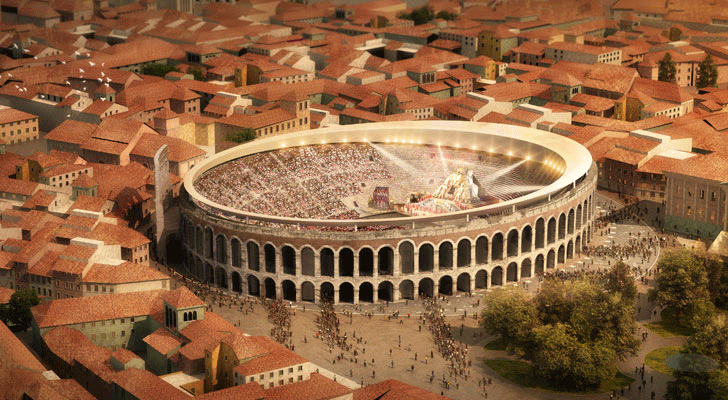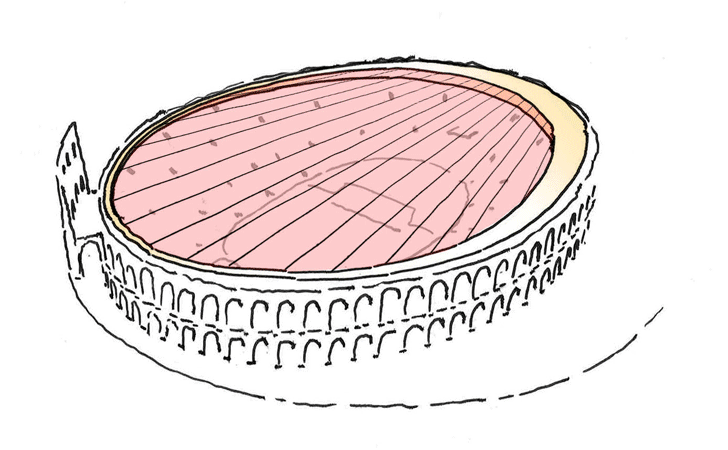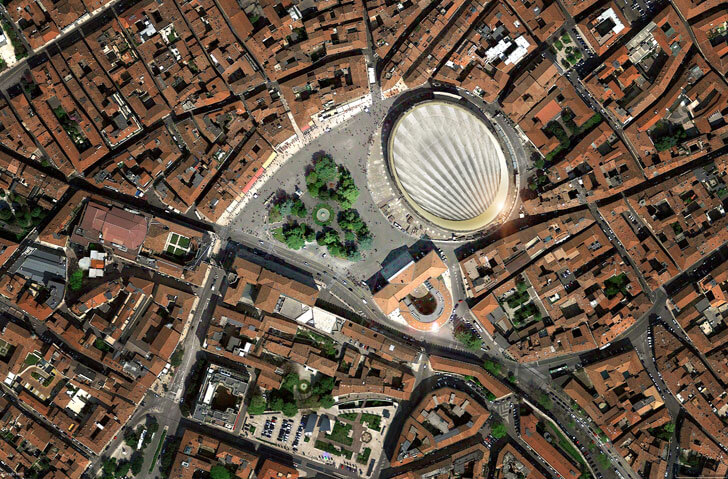Compiled
by Avinash Yadav
Drawings
& Renders: Courtesy gmp
Read
Time: 3 mins
The architects Von Gerkan, Marg and Partners (gmp) and engineers
Schlaich Bergermann Partner (sbp) have won the International Ideas Competition for
a modern scallop-shell-looking roof over Verona’s historic arena…
The arena, which was built in 30 AD under Emperor Tiberius, is
one of the largest and best-preserved amphitheatres dating from Roman times.
It’s now an important landmark and tourist destination - a UNESCO world
cultural heritage site, currently being used for operas and concerts.
When a structure holds a historical and cultural significance,
it becomes important that any new intervention does not take away from the
original. Hence, the architectural design and ingenious engineering strike a
balance to create a retractable and reversible roof structure, which – on the
one hand – makes it possible to use the arena during bad weather and protects
it against adverse environmental effects; and - on the other hand – respects
the historic monument as best possible with least interference in the structure
and appearance of the amphitheatre.
The winning design includes a compression ring, which is clearly
raised above the arena and holds the retractable membrane construction. The new
structure covers the entire area of the amphitheatre in the shape of an ellipse
and creates space for additional lighting and state-of-the-art stage
technology.
An intelligent mechanism involving a fan-shaped movable cable
network and the roofing membrane, protects the entire arena against bad
weather, but can also be fully retracted into the compression ring, when the
weather is more favourable.
The roof is closed in a two-step process in which the cables are
moved out from their home position in the compression ring and the membrane
extended along these cables; this configuration of the retraction mechanism
that the designers claim “has never been built before”.
Nevertheless, from tried-and-tested retraction mechanisms already
in use at the stadium in Frankfurt and the national stadiums in Warsaw and
Bucharest, certain elements can be re-applied and developed in this new
configuration for Verona. Winches are used to move the cables from their
parking positions to their extended positions along the oval compression ring.
Once they are firmly attached in their final position, the cables are
hydraulically pre-tensioned in the mechanical part of the parking area. Now the
membrane parked in that area can be extended outwards in the shape of a star
using radially acting cable winches. A few inches before the end position,
hydraulic tensioners engage with the front moving trolleys and apply the
required pre-tension to the membrane.
In this way, the view of the open sky is unrestricted, when the
roof is open, preserving the open-air atmosphere. From the outside, the
structure is barely visible, which means that the historic character of the
Roman arena is retained.
The jointly developed design was the winning entry of over 80
competing submissions from around the world. It now awaits further course of
action.
Fact
File
Design:
Architects von Gerkan, Marg and Partners and Schlaich Bergermann Partner
gmp
Design Team: Prof. Volkwin Marg & Hubert Nienhoff with Martin Glass &
Nikolai Reich
sbp
Design Team: Knut Stockhusen & Knut Göppert with Daniel Gebreiter & Chih-Bin Tseng
Client:
Municipality of Verona Piazza Bra’ 1






No comments :
Post a Comment